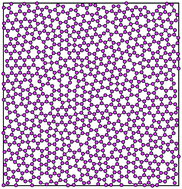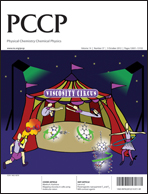Model investigations of network-forming materials
Abstract
Recent advances in the study of network-forming materials are described for systems dominated both by ionic and covalent interatomic interactions. Modelling strategies are described which focus both on describing specific systems of interest and on modelling the systematic evolution of network topology. The effect of network topology on the presence of ordering both on intermediate- and extended-length-scales is discussed. The effect of the topology on the mechanical rigidity is also described and analysed in terms of a mean coordination model. In addition, the isomorphology between amorphous silicon and the silicon sub-lattice in SiO2 is described. Polyamorphism in Si and ZnCl2 is analysed and discussed. Finally, the study of reduced (two) dimensional systems is discussed for carbon, silicon and germanium.


 Please wait while we load your content...
Please wait while we load your content...